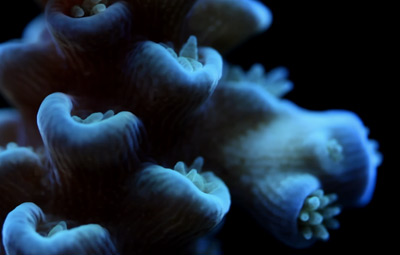Calcium and alkalinity are vitally important chemical parameters in reef aquariums. They are used by stony corals to build their calcium carbonate skeletons. A lack of calcium and alkalinity in the water will inhibit the growth of reef-building corals and invertebrates, which will eventually lead to health problems.
What is calcium?
Calcium is one of the major ions in salt water. It is the fifth most common ion in salt water behind, chloride, sodium, sulfate, and magnesium. In most healthy reefs, the calcium level hovers around 425 parts per million (ppm). It regularly pairs with anions such as sulfate, carbonate, and bicarbonate in solution.
What is alkalinity?
Alkalinity is a little more difficult to explain than calcium. It is not a particular ion, but rather the buffering capacity of salt water. Buffering capacity can be thought of as the amount of acid required to lower the pH of salt water to the point that bicarbonate turns into carbonic acid. It sounds overly technical, but in layman’s terms, higher alkalinity levels equal greater chemical stability in our reef tanks.
Maintaining calcium and alkalinity

On quick glance, it would seem that simply adding the desired ingredient could easily solve the problem. For example, if your reef tank had a calcium level of 300 ppm when you desire a value closer to 400 ppm, you could theoretically add a calcium supplement to boost it. Unfortunately, reef aquarium chemistry is rarely that straightforward in practice. Addition of a calcium supplement in this manner often comes with a corresponding fall in alkalinity levels.
This problematic see-saw effect between calcium and alkalinity stems from how the two ions interact with one another. The two ions combine to form calcium carbonate and fall out of solution, thus lowering both levels.
Here are five practical techniques for maintaining healthy levels of calcium and alkalinity:
Option #1: water changes
The first technique is very basic: water changes. Water changes help manage fluctuations to a large degree. Most salt mixes available in the hobby today are formulated to have slightly higher concentrations of both calcium and alkalinity. Frequent water changes replenish major elements as well as trace elements.
For reef systems that are packed with stony corals, additional supplementation may be required. That brings us to…
Option #2: kalkwasser
Kalkwasser is an age-old supplement that is highly effective in boosting both calcium and alkalinity. Kalkwasser is calcium hydroxide and is considered a balanced supplement that boosts both calcium and alkalinity together.

Kalkwasser comes in a white powder that you mix with purified water. It gets very cloudy for a few hours, but after that the cloudy particles settle, leaving a clear supersaturated solution. That solution is then added very slowly into the aquarium. It is important to add the solution slowly because it is very concentrated and can precipitate out quickly, thus defeating the purpose of adding it in the first place. You will know you’re adding it too quickly if the water looks cloudy after kalkwasser addition.
When properly administered, kalkwasser works beautifully. Many hobbyists use kalkwasser as their top-off water rather than using regular purified water.
Option #3: calcium reactor
A more automated method of maintaining calcium and alkalinity is a calcium reactor. These devices slowly dissolve calcium carbonate media in a reaction chamber and slowly introduce calcium and carbonate ions back into the tank. They are great for keeping water chemistry rock solid for months.
Option #4: two-part solutions
As great as kalkwasser and calcium reactors are, they are balanced supplements, which are not particularly effective when there is an imbalance in the reef. If the value of one component is low but the other is normal, using a balanced supplement will not work.
The best option in this situation is a two-part additive. They come in separate bottles, one for calcium, and one for alkalinity. Two-part additives can be added in different amounts, and over time the levels can be boosted. Like I mentioned before, it’s not particularly effective to add just the calcium portion or just the alkalinity portion, but you can inch them up by adding in both with a slightly heavier dose of the component you want to boost.
Option #5: magnesium
The fifth and final method of dealing with calcium and alkalinity issues is to take a look at magnesium. It may seem counterintuitive that the solution to calcium and alkalinity imbalances is to elevate magnesium, but the three ions interact regularly.
Magnesium is very similar chemically to calcium. It can bind up carbonate ions, thus increasing the overall alkalinity of the water. If you find that no amount of tweaking calcium and alkalinity directly is helping, you may want to make sure it is not your magnesium level that is, in fact, low.
Closing thought
In summary, calcium and alkalinity are two of the most important chemical parameters to monitor closely in your reef aquarium. We hope this article was helpful in understanding them a little better.



